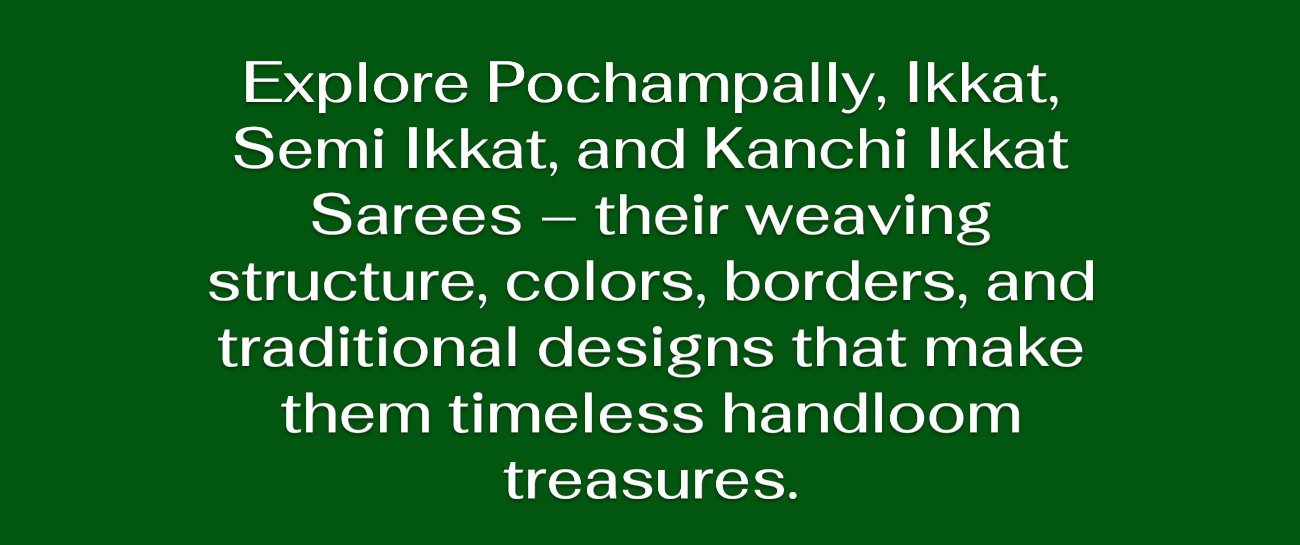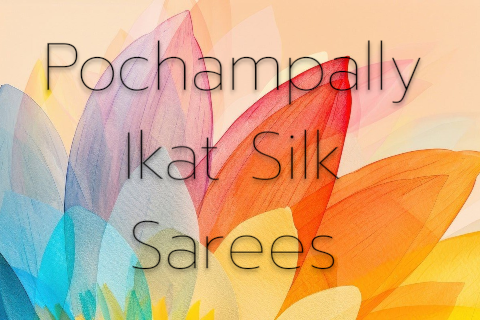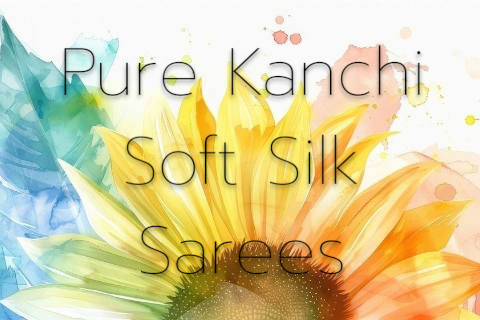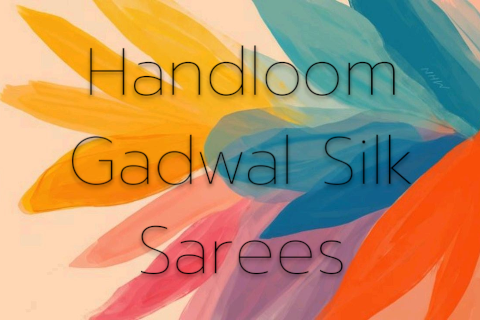Introduction to Ikkat Silk Sarees
Ikkat Silk Sarees represent a sophisticated evolution in India’s handloom legacy, blending heritage with innovation. Though rooted in the historic weaving culture of Pochampally, these sarees took on a modern identity around 2005 with distinct weaving techniques that differentiate them from their predecessors.
What is Ikkat?
Ikkat (or Ikat) is a dyeing technique where yarns are tie-dyed before weaving. The resulting patterns emerge with crisp edges and vibrant motifs that appear embedded into the fabric. In India, both Telangana and Gujarat are famed for their Ikkat traditions.
Difference Between Ikkat and Traditional Silk Sarees
Unlike printed or painted sarees, Ikkat involves pre-dyeing threads to form patterns directly in the weaving process. Traditional silk sarees often focus on embroidery and zari work, while Ikkat relies entirely on dyed-thread artistry.
The Birth of Ikkat Sarees (Since 2005)
Roots in Pochampally
The Ikkat silk saree movement was born in Pochampally, the same town known for its signature double ikat sarees. Around 2005, master weavers began experimenting with new ply techniques to create lighter, more fluid drapes.
Timeline and Introduction Year
This new variant was first introduced to meet changing market demands for lighter sarees with sharper pattern visibility. Since then, the term “Ikkat Sarees” began to replace “Pochampally” for these updated versions.
Weaving Technique Behind Ikkat Silk Sarees
Understanding Warp and Weft
The foundation of any saree lies in its warp (lengthwise threads) and weft (crosswise threads). In Ikkat sarees, both sets are often tie-dyed, requiring perfect alignment to bring the design to life.
Warp: 3-Ply Threading
In the Ikkat sarees developed post-2005, the warp threads are 3-ply, making the fabric structure more flexible while retaining strength.
Weft: 6-Ply Threading
Weft threads use a finer 6-ply system. This combination makes the saree thinner than the original Pochampally type, giving it a soft, flowy texture ideal for draping.
Texture and Weight Comparison
Cloth Thinness and Drape Quality
Compared to older Pochampally sarees, Ikkat silk sarees feel smoother and lighter. The fabric hugs the body comfortably and falls elegantly, making it suitable for all-day wear.
Weight Range: 650 to 800 Grams
While traditional sarees were around 400 grams, the Ikkat silk sarees range between 650 to 800 grams, offering a balance between substance and comfort.
Why the Name Change from Pochampally to Ikkat
Branding and Differentiation
As the technique evolved, the name “Ikkat” was adopted to help consumers easily identify the newer versions. This also helped the product reach a broader, modern market, both in India and globally.
Market Trends and Consumer Understanding
Urban buyers and international customers became more familiar with “Ikkat” as a category than the region-specific “Pochampally,” prompting this rebranding.
Types of Ikkat Silk Sarees
Patola-Inspired Double Ikkat
Some weavers draw inspiration from Patan’s Patola sarees, producing double ikat designs with mirror-like patterns on both sides.
Single Ikkat Variants
More affordable and widely available, single ikat sarees dye either the warp or the weft, making the process simpler yet stylish.
Hybrid Ikkat Blends
These combine ikat patterns with other weaving styles like Banarasi or Kanjeevaram to create modern fusion wear.
Colors, Motifs, and Symbolism
Traditional Patterns
Diamonds, zigzags, and circular motifs dominate traditional Ikkat silk designs—symbols often linked to spirituality, prosperity, or protection.
Contemporary Artistic Variations
Modern weavers introduce digital-inspired patterns, florals, and even abstract art, attracting younger buyers to handloom fashion.
Comparison: Ikkat vs. Traditional Pochampally Sarees
| Feature | Ikkat Silk Sarees | Traditional Pochampally |
|---|---|---|
| Ply Count | Warp: 3-ply, Weft: 6-ply | Single-thread warp and weft |
| Weight | 650–800 grams | ~400 grams |
| Texture | Smooth and thin | Slightly heavier |
| Motifs | Evolved designs | Classic geometric |
| Name Recognition | National and global | Mostly regional |
Fabric Materials and Quality
Pure Mulberry Silk
High-end Ikkat sarees use pure mulberry silk, giving a premium finish and superior drape.
Cotton-Silk Mixes
Affordable versions blend cotton and silk, combining comfort with sheen.
Natural vs. Chemical Dyes
While synthetic dyes dominate, many artisan collectives are reviving natural dye techniques for eco-conscious customers.
Artisan Involvement and Regional Weaving Clusters
Key Villages and Communities
Ikkat weaving is concentrated around Bhoodan Pochampally and surrounding villages in Telangana. These clusters are known for producing thousands of sarees monthly.
Skill Specialization of Weavers
Some families specialize only in tie-dye preparation, while others are expert loom operators. It’s a community effort rooted in tradition.
Price Range and Affordability
Standard Market Prices
Cotton-silk Ikkat sarees start at ₹2,500, while premium pure silk ones can go up to ₹30,000.
Premium Handwoven Masterpieces
Limited edition sarees, made with natural dyes and fine detail, are priced even higher for collectors and wedding markets.
Wearing and Styling Tips for Ikkat Silk Sarees
Ideal Occasions
-
Wedding receptions
-
Office parties
-
Ethnic day celebrations
-
Cultural events
Blouse and Jewelry Suggestions
-
Match with handwoven blouses or brocade jackets
-
Pair with antique gold or oxidized silver jewelry for a complete look
How to Maintain Ikkat Silk Sarees
Cleaning and Washing Tips
Always dry clean to retain dye and fabric integrity. Avoid harsh detergents.
Storage Guidelines
Store in cotton saree bags, folded inside out, and keep away from moisture or direct sunlight.
Where to Buy Authentic Ikkat Sarees
Trusted Retailers and Websites
Look for platforms like Taneira, Jaypore, or Craftsvilla with GI-certified products.
Direct from Weavers and Exhibitions
State-sponsored exhibitions and local handloom expos offer direct-from-weaver pricing and authenticity.
Global Popularity and Modern Demand
Export Markets
Countries like the U.S., Canada, and Australia import these sarees for their Indian diaspora communities and art collectors.
Celebrities and Designers Wearing Ikkat
Designers like Gaurang Shah have elevated Ikkat on runways, and celebrities from Vidya Balan to Sonam Kapoor have proudly flaunted them.
FAQs About Ikkat Silk Sarees
Q1. What makes Ikkat sarees unique?
Their pre-dyed threads and geometric patterns woven into the fabric make them stand out.
Q2. Are Ikkat sarees handwoven?
Yes, genuine Ikkat sarees are entirely handwoven using traditional looms.
Q3. Why are they heavier than Pochampally sarees?
Due to 3-ply warp and 6-ply weft threading, which adds density and durability.
Q4. Can I wear Ikkat sarees daily?
Cotton-silk variants are ideal for daily or office wear.
Q5. How do I know if my saree is genuine Ikkat?
Check for symmetry on both sides and ask for a handloom/GI certificate.
Q6. What’s the best way to style an Ikkat saree for modern events?
Try pairing it with a designer blouse, belt, or ethnic boots for a fusion look.
Conclusion: A New-Age Saree With Ancient Roots
Ikkat Silk Sarees stand at the crossroads of innovation and tradition. They may have evolved from Pochampally roots in 2005, but they carry forward centuries of artistry. With their lightweight texture, vibrant patterns, and modern appeal, they’re a perfect blend of culture and contemporary fashion.









